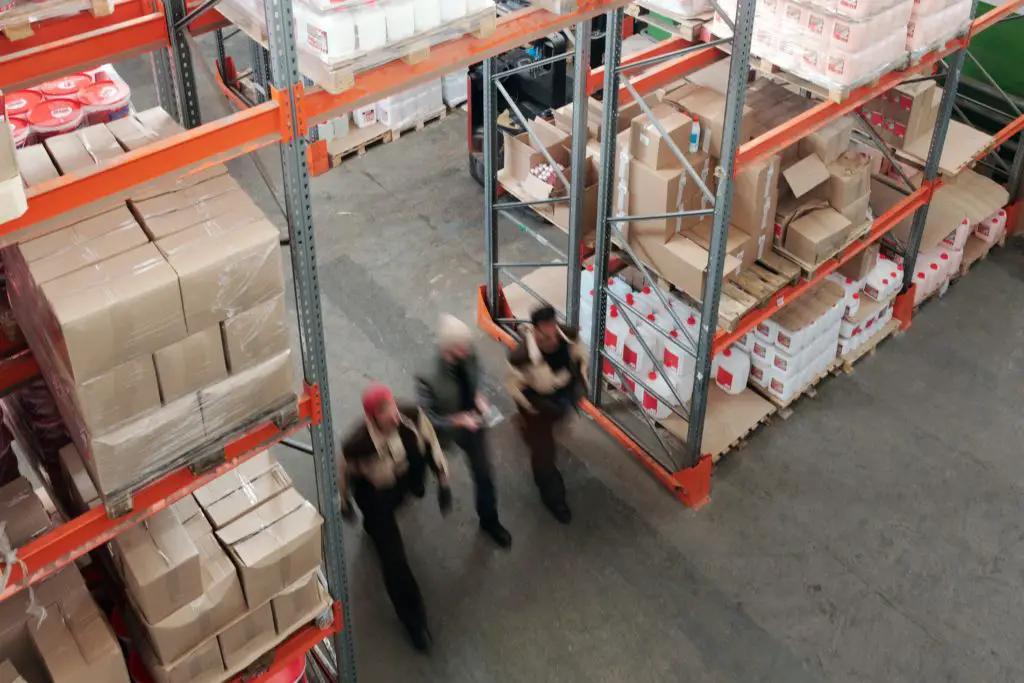Growing businesses often keep merchandise in warehouses and, increasingly, fulfillment facilities. It’s also usual to be confused by the pricing arrangements of these facilities. Let’s learn more about Calculate A Warehouse Cost

What much of rental space can you afford? Is renting a warehouse or a fulfilment facility preferable? Should you purchase or rent real estate?
Keep reading to find out how to determine warehouse expenses and whether to rent, purchase, or utilize a distribution center.
The Total Costs of Renting a Warehouse?
Warehousing facilities charge by square foot or cubic foot for floor space. However, you may be expected to pay for running expenditures as well. Here are the cost considerations that may affect your ultimate warehousing costs:
- Size of the area required (in square/cubic feet)
- Rental fee per square foot as a starting point (due monthly or annually)
- Calculate the operational costs
Calculation of monthly rate:
Monthly Rate = (Rental Space x Rental Rate) + Total Operating Expenses
Rent or buy warehouse space?
If you’re a large corporation, the answer is a tentative yes. Warehouse space is purchased in the same way it is rented: by the square foot. However, investing in your own warehouse space is fraught with danger. You’re putting down a lot of money upfront, and you’re also responsible for upkeep. Would that money be better spent building your company? It’s your call.
As a warehouse owner, you will suffer the following additional costs:
- Capitalization (loan payments)
- Transport (moving inventory)
- Labor (including overtime)
- Services (water, electric, etc.)
- Inventory depletion (theft, damage, etc.)
- Insurance
Small firms should avoid purchasing warehouse space due to the high overhead. All the expenses outlined apply to you, but you have less money and a lower tolerance for a mistake.
Fulfillment Centers’ Cost Factors
Fulfillment centers, like warehouses, charge for storage based on the required space. On the other hand, fulfillment centers are complicated operations that pay personnel to unload, prepare, and transport merchandise. In other words, fulfillment facilities charge for both storage and labor.
However, labor expenses vary depending on various conditions throughout the intricate procedures of receiving, storing, and sending out your items. These cost considerations are as follows:
- Costs of inbound processing (receiving items for storage)
Your packages have arrived at the fulfillment facility. They must be unloaded, sorted, scanned, and stored in the correct location. However, not all items have the same properties. Some things cost more to process because of their size, delivery method, and so on, which might cause rates to rise.
Inbound processing costs at 3PL facilities might include the following:
- Method of product distribution (truck, container, LTL, parcel, etc.)
- The inbound cargo weight average
- Inbound shipment frequency
- The total number of SKUs in each shipment
- Palletized, floor-loaded slip sheets and other product storage methods are available.
Employees, for example, take longer to handle a collection of big and heavy incoming shipments than a single palette of iPhone covers. Consider keeping just things that are comparable and lightweight to save fulfillment expenses.
- Processing of outbound data (picking, labeling, and shipping)
Your customer’s order is sent to the fulfillment facility. Your costs are calculated depending on the time it takes to select and ship the item, which includes elements such as:
- The number of orders dispatched each day
- Total SKUs sent each day
- % of shipments selected by the case or as single items
- Special requirements for labeling, processing, packing, or shipping
Total Costs of Fulfillment Centers
The cost of storage includes both the space you use and the space you share. There are three sorts of 3PL fees:
Direct space: the amount of room needed to keep your goods.
1. Shared (indirect) space: space used to service you but also shared with other customers.
2. Utilities, cleaning services, security, maintenance, insurance, and other running costs
3. Shared spaces include travel corridors, office space, and staging locations such as the dock. Direct space costs include running expenses.
For fulfilment facilities, the cost per square foot is calculated as follows: total cost per square foot / direct space %
Let suppose the total cost per square foot is $0.75. Your direct space utilization occupies 20% of the total area in the fulfilment facility. The price per square foot is therefore determined as $0.75 / 20% = $3.75.
Conclusion
There are two options for low-cost storage space: warehousing or fulfillment centers. Compare the prices of each alternative carefully, giving special attention to running expenditures. Fulfillment centers are becoming more popular among e-commerce retailers for their assistance with delivery, but simple warehouse space may be your best choice.
FAQS
- How much a small warehouse is spent on warehousing
The minimum amount a small warehouse is spent $1000 per month.
- Which factors are involved into calculating the warehouse costs?
Different factors depend on the warehouse module, storage, space stock, fulfillment centers, etc.

